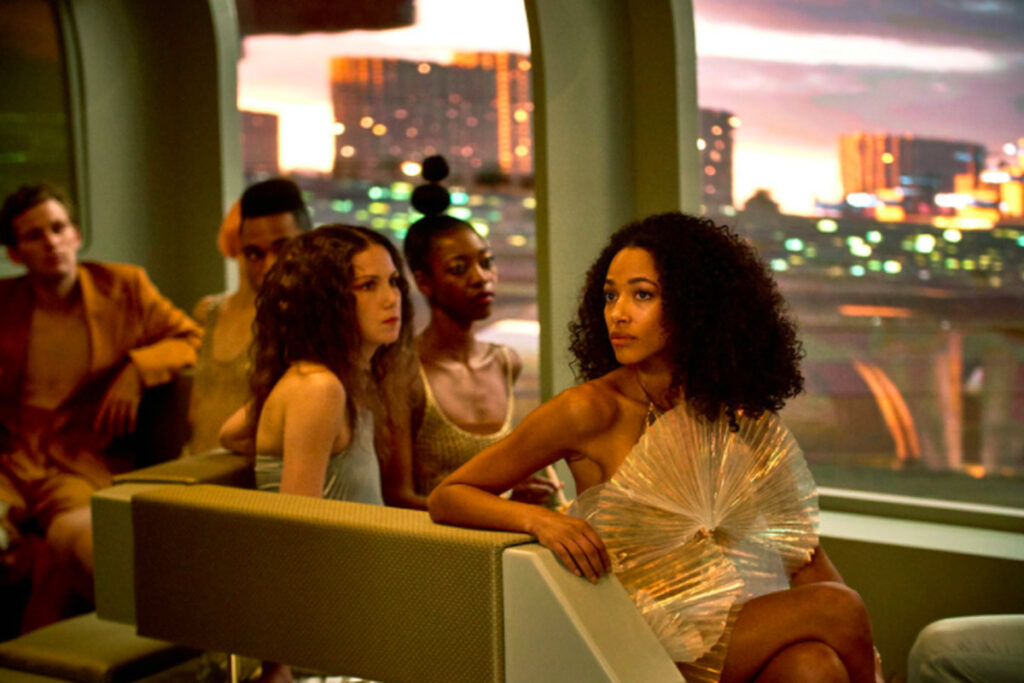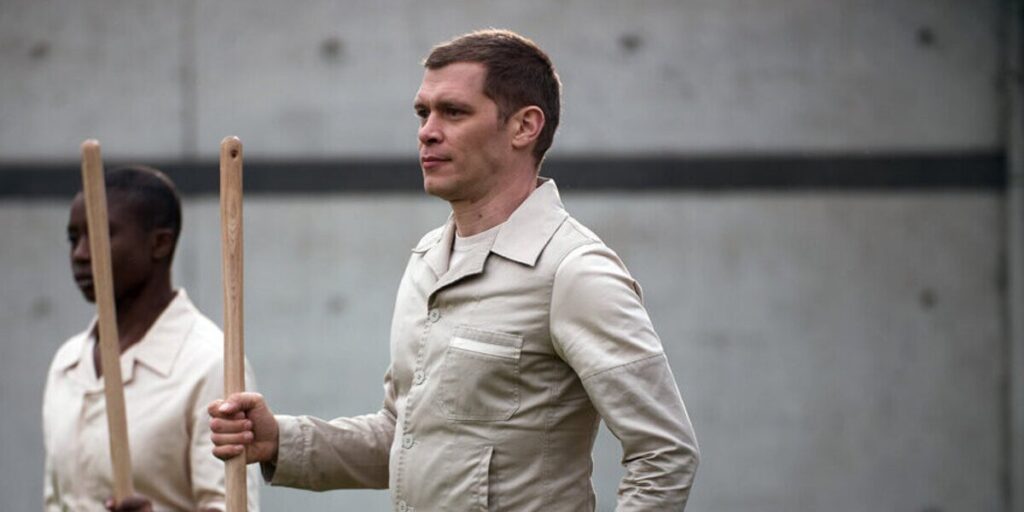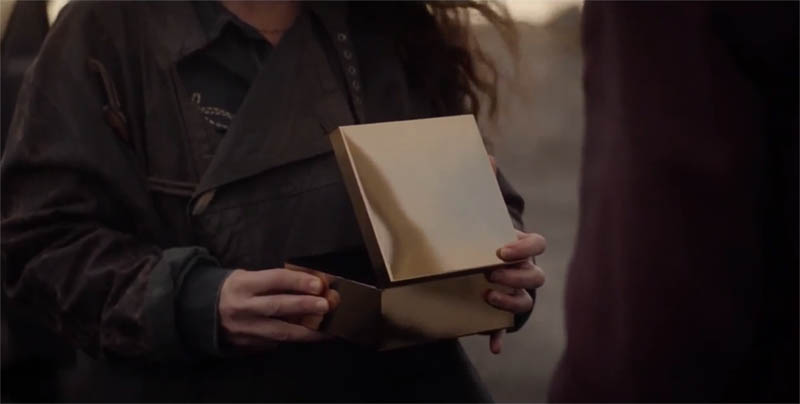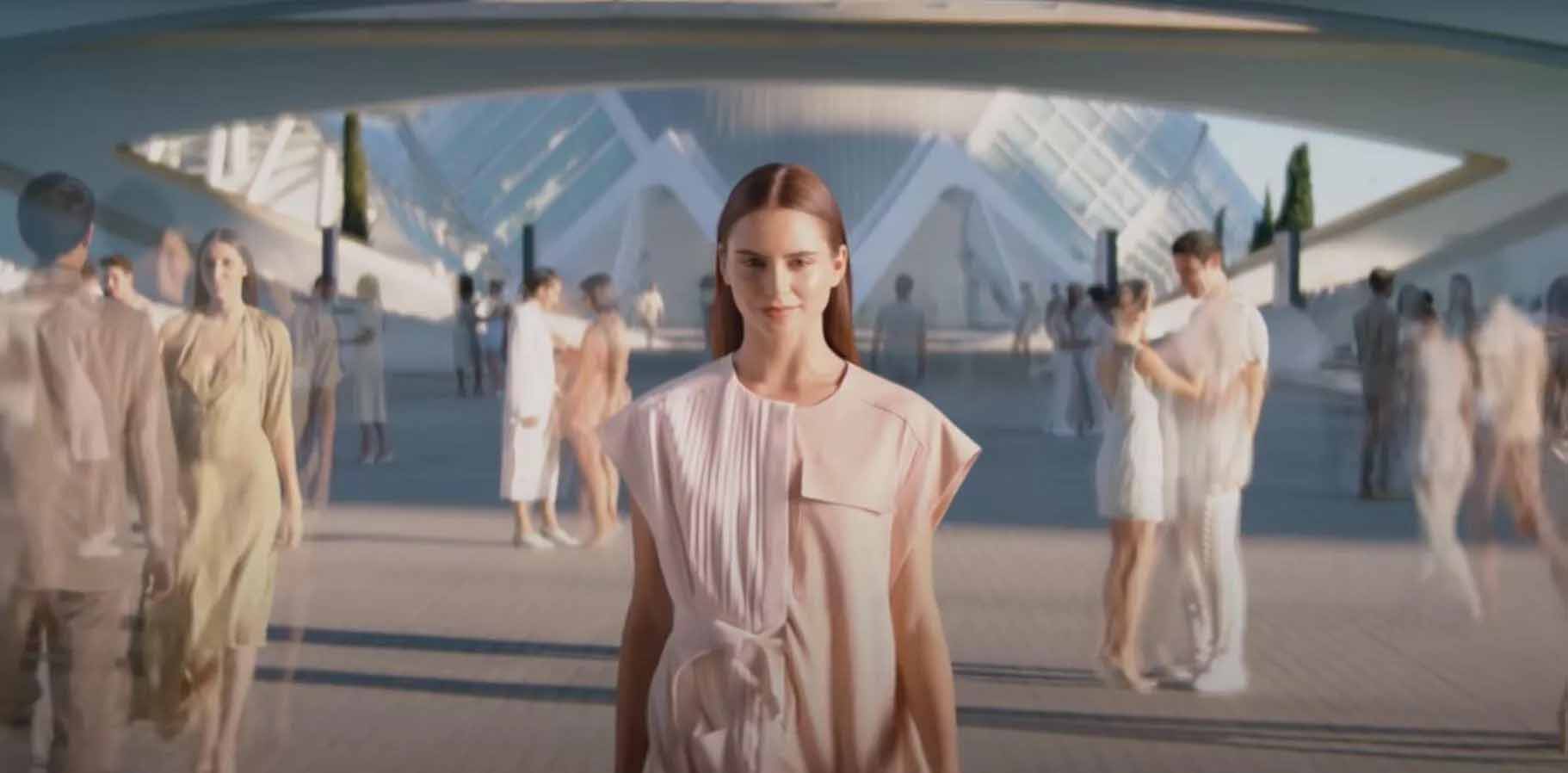I wasn’t hot on this whole Peacock idea at all at first. But then I realized it was “free,” you just needed an account? Oh. Huh. Interesting. OK. Tell me more. And I have to admit that the only reason I was trying to learn more was because of one show – their adaptation of Brave New World, based on Aldous Huxley’s book by the same title. So today I have a tall order to accomplish for you all. “Peacock’s Brave New World Compared w Original and Ending Explained” – which means, I want to see how the show and the book differ, and I also want to see if we can get that ending explained for you all.
First, I have to say, if you enjoyed Peacock’s Brave New World – you might also really enjoy HBO’s Westworld – or Hulu’s Handmade’s Tales. Both very very similar re-envisionings of classics. The original Brave New World novel is a dystopian novel written what, 90 years ago, and is set in a futuristic dystopian state. And in said futuristic world state, the citizens are all engineered into a strata of engineered DNA based hierarchies. One of the cool parts of the novel (if you haven’t read it yet, if you have – I don’t know what to tell you, just nod your head a lot through this bit) is how Huxley anticipated technological and scientific leaps in our world over the past 100 years. For example, there are interesting predictions about reproduction science, his prediction of sleep learning, and psychological marketing manipulations. It is very similar in feel to the book 1984 and is just a fantastic dark prediction of where our society has been going in the past centennial. So it would seem a ripe picking for a modern remake. If you aren’t aware of the show, here’s a quick look at Peacock’s version of the book:
Yeah, even if you haven’t read the book – you can see already that Peacock’s show is totally different – and unabashedly walks its own path. Such a gorgeous sheen to this new version. But why don’t we get to talking about the various similarities and differences between the show and the book, shall we?

Book and Show Similarities and Differences
One of the most important aspects of the book is the love triangle between a character named Bernard (played by Harry Lloyd – who I adored in the show Counterpart), Lenina (played by Jessica Brown Findlay – who came to fame in America with her role in Downton Abbey), and John the Savage (played by Alden Ehrenreich who you know mainly from his controversial role as Han Solo in the movie Solo.) And it was the core structure of this triangle that carried forward into the show.
Peacock also held tight to the idea of the caste strata cemented into the book. In Aldous’ novel the “utopian” society is called The World State. In Peacock’s version, this hierarchical enlightened world is called New London. And in this “perfect” world, they no long procreate, humans are manufactured in a lab, and crafted to fit into each hierarchical caste system. In the book and the show, the five different castes are the Alphas, Betas, Gammas, Deltas, and the Epsilons. Lower caste individuals are crafted to do the menial, manual labor type jobs, and they are conditioned through social manipulation and psychological – what, torture? reconditioning? (Are you getting a sense that this Utopia is actually the Dystopia?) But there is always soma, Huxley saw soma as a chemical regulator, and moderator of the people:
“There is always soma, delicious soma, half a gramme for a half-holiday, a gramme for a week-end, two grammes for a trip to the gorgeous East, three for a dark eternity on the moon…”
page 102 of Huxley’s Brave New World
And soma, here in Peacock’s version, is used similarly. At first I thought it clever enough that the colors gave different types and versions of soma, but soon I realized that was just ornamentation as the characters were not popping certain colors in certain circumstances. The colors, in effect, were just random. Sure, orange was left for counselors. Yellows seemed to be trauma recovery. Blues were uppers for parties, etc. Now that I think about it, maybe the colors did have a purpose in the show? hahah. Regardless, both allow for a chemical dependence, actually, a chemical slavery to avoid feeling, and depression. But better yet, it neutralizes tempers, anger, hatred…which in turns helps in the perpetuation of their mental slavery.
But where Peacock’s BNW and Huxley’s significantly differ is that Huxley didn’t envision, or foresee, an internet overlord equivalent… Indra. And it is Indra that makes New London’s rule of No Privacy achievable in that through Indra, they are able to monitor everyone in New London perfectly in order to insure complete compliance.

The Characters of Brave New World
Lenina, the scientist B, seems to be a much more understandable character in Peacock’s version. While still being a draw for both Bernard and John we see that she seems to have way more free will, and determination, in the show than in the book. Don’t get me wrong, I like the change, it pulls her into a much more sympathetic story arc. In the book, Lenina is totally fine following New London’s social order contract, and sticking with soma as the chemical chains that bind society. But in the show, even in episode one, we see that she is already seeing the implicit problems inherent in the system.
Peacock Lenina’s relationship with Bernard moves dramatically only after their traumatic experience in the Savage Lands, and Bernard isn’t interested in exploring the larger impacts of this new knowledge and chaos they have experienced together. But in the book, I got the feeling anyway, that Lenina saw Bernard as a useful A+. You know? I really got zero idea that she was ever really interested in Bernard. Worse! Her relationship with John in the book makes her look like she’s just wanting the circus experience of seducing a zoo animal.
Similarly, in Huxley’s version of BNW Bernard was actually a bit of a villainous archetype. Though a lead in both, they have different flavors that are interesting to me. In the show, Bernard just seems to be pitied by most, and just generally seen as weird in spite of his A+ designator. But in the book, Bernard is an active manipulator, constantly contriving events in his favor – like the death of John’s mother. So the show has willingly toned this more evil aspect of his personality down to make him a more likely match for Lenina. But Bernard is interesting in that he actively wonders at his strangeness, and his inability to be an A+. He seems different, and yet, not. In the show this is explained by his contact with a virus, but we really aren’t sure what is going on with Bernard as the show unfolds.

The Reservation
If it was ever clear that Huxley’s book was written almost a hundred years ago, The Reservation should put an end to any doubts. Instead of a campy, Old World prison for savages, where the Savage Lands inhabitants put on crappy, over exaggerated plays depicting trailer-trash-Americana, the book actually uses Native Americans, trapped in their reservations for this. Yeah, that definitely wouldn’t go over well today at all.
But the biggest change – the most important leap that the show makes – is without a doubt, the uprising that happens in the “Savage Lands.” Both Bernard and Lenina are shaken by their encounter there. Their near death experience. But in the book? There is no uprising. No violent murdering of the show’s watchers, no fleeing for their lives.
Instead of the uprising, John is discovered, and found to be an abandoned child of the Linda (played by Demi Moore of all people in the show) and a previous director. Bernard only realizes he’s a legit child of the World State because of a story that the ex-director shared with him before he was in effect banished there. But upon finding John and his mother, he has claim to returning. No. there is not a gate, or fence or anything. Just a trashy Indian road-side attraction and a discovered one night stand.
Life Post Savage Lands
John’s time in The World State is similar to his time in New London, but there are significant difference as well. Lenina becomes obsessed with John solely because of John’s refusal to attend a feelie (orgy). But after attempting to seduce him, John beats her while quoting Shakespeare at her. After which, John learns his mother has died. And soon after, he convinces some Delta clones to revolt, to ditch their soma, and to rise up. But soon after they do, the police (which aren’t a thing in Peacock’s version) quell the riot with vapor (maybe a better technique than teargas?), and capture John, Wilhelmina “Helm” Watson (Hannah John-Kamen), and Bernard…and they are taken to Mond. And it’s here that I found the most interesting dialog in the book when John and Mond debate the World State’s policies. Basically the conversation centers around the dehumanizing policies of the state, and Mond’s responses that stability is the key objective. What is life without Art, Religion, Science…etc.? Soon after Mond informs Bernard and “Helm” they will be banished. Which, to his credit, sends Bernard into a frenzy. John, given the option to follow them into banishment, refuses, and instead, takes up residence in a lighthouse.
There at his self banishment get away, John attempts to purify himself by gardening and self-flagellation. But the citizens of the World State are never not curious, and when they see John flagellating himself descend, and turn the scene into a feelie. And, of course, this in turn causes more people to come find out what all the fuss is about. To see John whip himself. But when Lenina arrives, with arms outstretched, John flips out and screams “Kill it! Kill it!” – which results in another feelie/orgy. And, unfortunately, the next morning, overwhelmed with remorse from his succumbing to this corrupt World State society, he hangs himself. Boom. Now that’s an ending that says something. But I’m sure Peacock has an amazing ending too, right?!? Right?!

Peacock’s Brave New World Ending
In a pivot from the book, we learn that New London was created by Indra, a simulation AI that has studied Mustafa Mond’s thesis, and constructed a world that is void of outbreak and chaos through the use of drugs and sex. But, as the show unfolds, we learn that this is just the latest iteration that Indra has attempted to create that would ultimately remain stable. But as with past versions, this version also is infected with a virus. And no matter what Mond tries to do, it doesn’t seem like she or Indra are going to be able to fix it.
The uprising started by John ultimately ends up in toppling the entire world. What with there being no police or any military able to stop the Epsilons, Bernard doesn’t stand a chance as the new director. What with the Epsilons killing Henry the new old director! hahah.
But, the piece that the show gives the audience that the readers of the book were hoping for, but didn’t get, was a relationship between Lenina and John. For several weeks the two vow their love for one another, hiding together for a couple hours a night. That though ultimately wobbles out of control when Lenina’s expectations as a B+ collide with John’s love for her. During one particularly bad moment, John puts the eyepiece back in, and notices Lenina and some Alpha making love. Which, brings about John and Lenina making love while emulating what happened on the dance floor. I think this is the 2000’s version of John’s screaming, “Kill it, Kill it!” and a feelie ensuing. I think?
After the uprising, and John and Lenina’s being reunited, Lenina admits she thinks everything John touches he destroys. And so they go their own way. John to fish in the ruined landscape that is New London. And Lenina to live out her dream by herself in the farmlands of the Epsilons. The most interesting development might just be that Bernard and Helm rocket away back to the Savage Lands. And they have a golden box. Wait, WHAT’S IN THE GOLDEN BOX?!?

What’s in the Golden Box??!?
OK, so, there is a lot to unpack with the ending of Peacock’s show Brave New World. But, if you go back, and re-watch the ending you’ll see what I’m saying happened actually did. Trust me though. So, as everything is imploding, we are watching as Mond has basically outmaneuvered Indra – maybe. Indra does not want to end up alone. We know that because she loves her mother, Mond, and has human-esque feelings of fear of solitary. Well, as the end barrels through we can see that Indra has chosen Bernard as his next leader/host. And she manipulates him by showing him visions of being a leader. And Helm too, is shown visions of Bernard as desirable, and as a leader. So when Indra gives Bernard the golden box, and drops him out at the cliff, near the rocket-port, he wakes to see Helm arrive. They are both of one purpose and mind. Why? Well, because they’ve been tweaked by Indra. Forced to unify their direction, and send them off together. So, the new duo take a rocket back to the Savage Lands.
And it’s there that Sheila guts them both like a fish. Actually, no, she doesn’t…even though she promised to if Bernard ever came back. Instead, Bernard gives her the golden box, and they all three exchange looks. And then she tells them to get in the truck, and they drive off together. So what’s in the box – let’s play out a few theories:
THEORY #1 – Lots and lots of soma? – maybe it’s just lots and lots of drugs…and she knows enough about soma that that works for Sheila? Yeah, no.
THEORY #2 – Pulp Fiction Briefcase? – I don’t know if you are a fan of Pulp Fiction, but in that movie, there is a similar McGuffin. It glows gold when it is opened, and I’ve had a theory forever that it contains the soul of Marcellus Wallace. Maybe this is a similar type box? And it contains Mond’s soul? Yeah, no… not that either.
THEORY #3 – Indra. IT CONTAINS INDRA – Come on, you knew this already. It contains Indra. Think about it… if Peacock is going to have a season two (come on, they are trying hard to keep up with HBO’s West World, and Hulu’s Handmade’s Tale… and they have to have a season 2!) they need Indra to move from New London and to create a New Chicago, or something. But she can’t do that trapped back across the Atlantic.
Bernard and Helm will be the new creators of this new world. They will think they are the Adam’s and Eve’s of the new world. But they are only being manipulated by Indra to do what she needs them to do…which is connect them to a new land, and to set her up with new resources and new people to design and manipulate.
Edited by: CY

